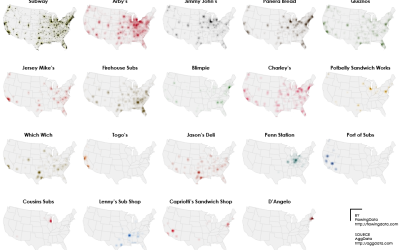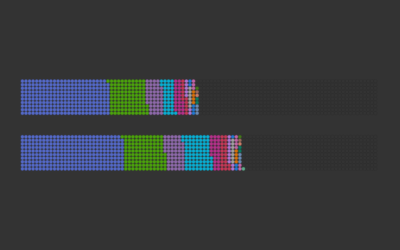NPR explains how we reached a population of 7 billion. Simply put, the world is making babies faster than people are dying, and with improved medicine and agriculture, people are living longer than before. The video above demonstrates the different birth and mortality rates, where each container represents a continent.
There has been a shift in recent years:
Much of that growth has happened in Asia — in India and China. Those two countries have been among the world’s most populous for centuries. But a demographic shift is taking place as the countries have modernized and lowered their fertility rates. Now, the biggest growth is taking place in sub-Saharan Africa.
[NPR via Graphic Sociology]






For a bit of fun, you can find out where you come in the 7 billion.
See: http://www.bbc.co.uk/news/world-15391515
The video on the main site is of global fire observations. When I click the link for the post, it’s the NPR video.
A very effective presentation. I envy the imagination that journalists can bring to their work.
I got more out of the video from The Economist:
http://www.economist.com/blogs/dailychart/2011/10/world-population
Plus, a couple of people noticed that Australia is not illustrated in any of the cylinders in the NPR video … though to be fair, its population is only 23 M.
Either way, it is good to hear that population grow is slowing and will level off. Now, about those resources and lifestyle choices in America… we need to start urbanizing, with NYC level densities.
What about those of us who garden? What about those of us who produce our own food? I am all for denser living but simply “encouraging” everyone to head to cities is not always the solution. Start by restricting lot sizes in the exurbs and suburbs.
Sorry, I did not mean to imply that dense cities are the only answer, but I stand by it as a large part of the solution in my mind. It’s great that you grow your own food, and that is sort of what I meant by lifestyle choices. For those of us in cities who don’t have room to start a garden, or time to tend one, other changes we need to make are learning to eat local (and thus in season) and support farmers markets, or choices like sharing cars/bikes through new programs, and becoming more knowledgeable consumers in regards to what it takes for items we buy to get to the shelves,
The last point is something I’m particularly interested in as of late. It would be great if you could scan the bar code of any item and get details about its production and delivery, such as the estimated carbon footprint, the labor involved, and what, if any, by-products were created in its production.
Out of curiosity, what % of your food consumption comes from your garden and what is your weekly effort?
>”For those of us in cities who don’t have room to start a garden,…”
So you and the other city dwellers expect us rural folks to provide you with food because…?
>”Out of curiosity, what % of your food consumption comes from your garden and what is your weekly effort?”
We raise about 5-10% of our weekly food needs, mostly just to stay in practice and because we enjoy raising some of our own food. We have the capacity to raise close to 100% of our needs on our mid-town lot. (Much of what is being grown is wasted. I leave the apples and pears to the birds and squirrels, don’t cut the asparagus, and tomatoes often rot on the vine as I over plant them. Then there’s all the edible flowers, plants and trees that decorate the yard. Push come to shove, I could harvest spiderwort and process acorns into meal.)
My weekly effort is about 8 hours.
We all have to become farmers if we want to feed ourselves in the future, no matter where we live. Not out of some lovely-dovey nostalgia trip, but because we will have to!